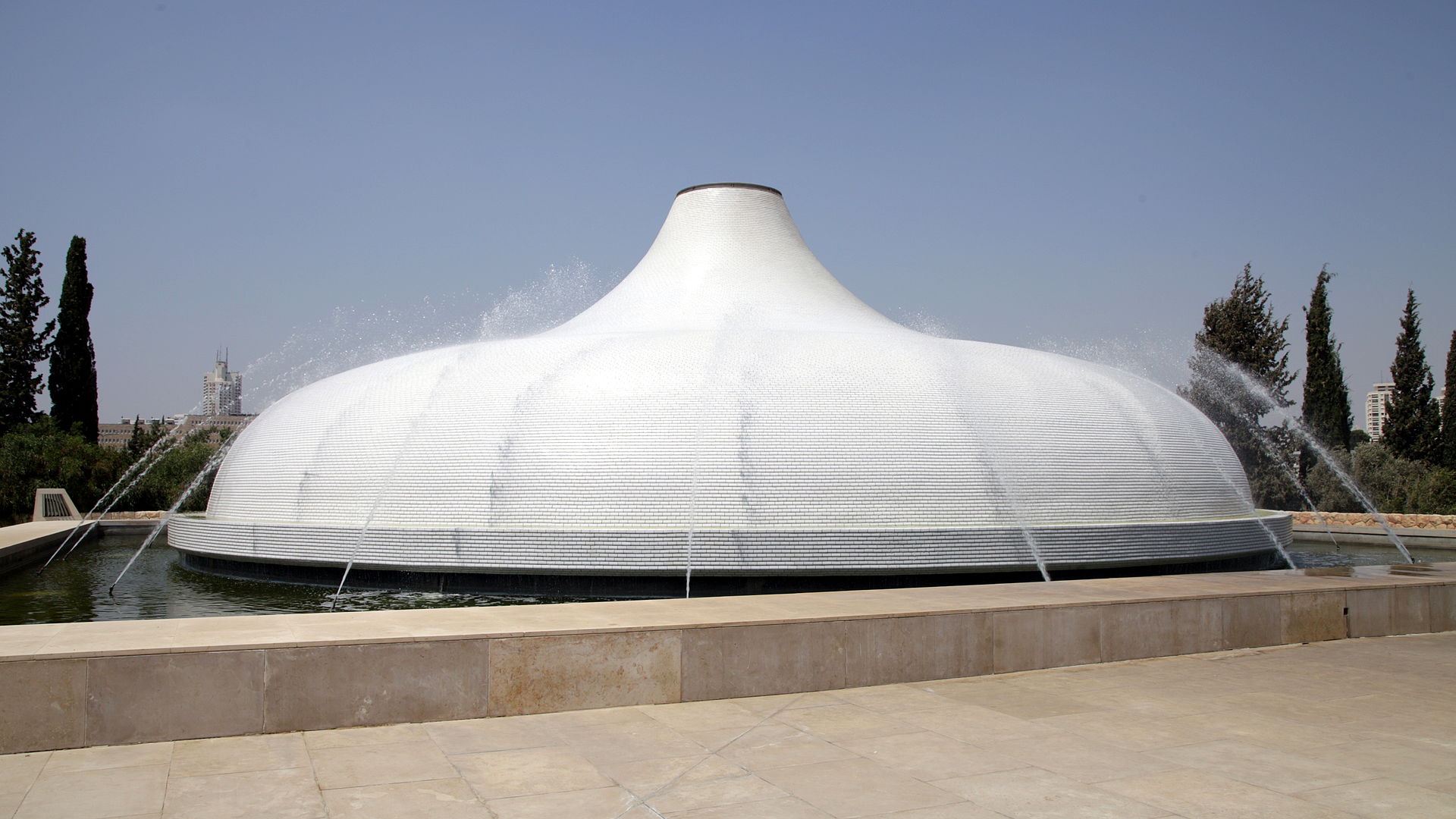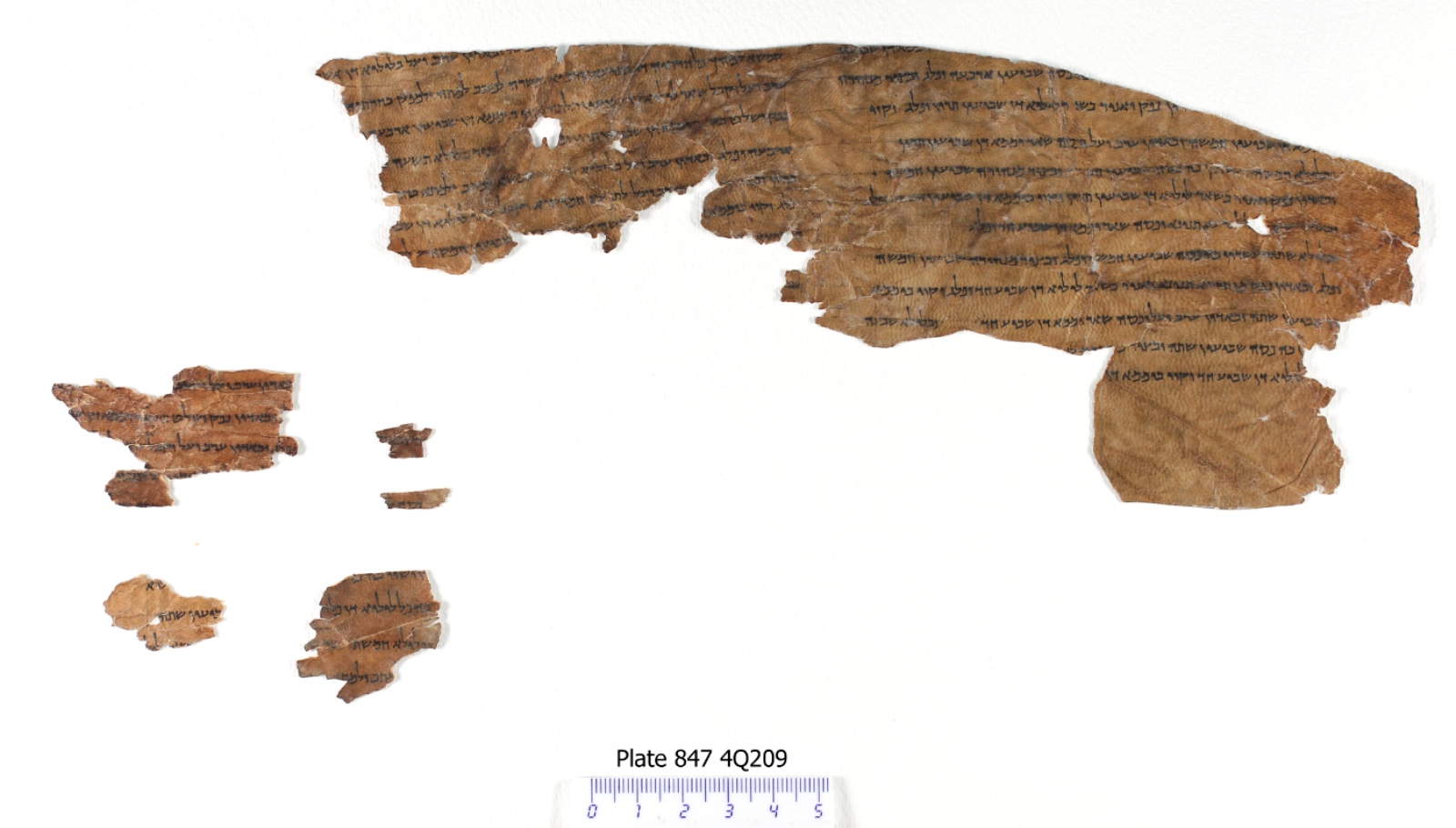|

Is there an attempt underway to ‘air-brush’ the Book of Enoch
from the Dead Sea Scrolls?
When I visited the Israel Museum in Jerusalem in early September, 2019, I expected to see in the Shrine of the Book presentation a celebration of the discovery of the Dead Sea Scrolls. Sadly, I found the presentation disappointing, confusing, and even misleading. The Shrine of the Book exhibit in Jerusalem, does injustice to what was arguably the most amazing arceaological discovery of the 20th century! The exhibit does not do much to help the viewer understand and appreciate the Dead Sea Scrolls discovery.
For instance, it is extremely odd that nearly half of this exhibit documents the survival of a Medieval manuscript known as the “Aleppo Codex”. The Aleppo Codex is a 10th century AD partial copy of the Hebrew Scriptures. The Aleppo Codex presentation at the Shrine of the Book gives the presenters the opportunity to make the argument that the Medieval version of the Hebrew Scriptures can be trusted. Though it is true the Dead Sea Scrolls can be used to defend the trustworthiness of parts of the Hebrew Old Testament, the Dead Sea Scrolls also calls parts of it into question. Ultimatly, the Aleppo Codex adds nothing to our understanding of the Dead Sea Scrolls; its inclusion at the Shrine of the Book is out of context and is indeed odd.
The rest of the exhibit does display copies of some Dead Sea Scrolls, however, the way this is done presents a skewed picture of the Dead Sea Scrolls. Someone without prior knowledge of the Dead Sea Scrolls will likely walk away from this exhibit not even knowing of the existence of a “Book of Enoch” or a “Book of Jubilees” which were also found in those caves. More than that, they would not know those two books’ importance, or that it was only due to the Dead Sea Scrolls those books were rescued from the legitimate air of doubt which hung over their status for hundreds of years. It was the Dead Sea Scrolls which vindicated those books which survive complete only in an Ethiopic language. The Dead Sea Scrolls were a revelation in that sense. The Shrine of the Book apparently knows nothing of this.
Unless you read the fine print on the exhibits at the Shrine of the Book, you would not even know there was such a thing as a Book of Enoch or Book of Jubilees, since they are not represented in the exhibit, though other more obscure, books of lesser importance are represented. At the Shrine of the Book you will not learn that the books of Enoch and Jubilees were among the top five most-represented books in the Dead Sea Scrolls.
But as if that was not bad enough, now for the topper...
Enoch the astronaut!?
If you want to see any fragment of the Book of Enoch at all, you will need to leave the Shrine of the Book entirely and go into a different museum complex to view an exhibit concerning Ilon Ramon, Israel’s first astronaut. Yes that is right, the exhibit presenters have completely removed the Book of Enoch from its context within the Dead Sea Scrolls, and as Israel’s legacy to the world and the heritage of the Church! A plaque in the Ilan Ramon exhibit says the presenters made a conscious, “...decision to display the Enoch Scroll here...”A Wow! What a mistake!

If this was not bad enough, add to this bleak picture that the overall understanding of the Dead Sea Scrolls presented in the exhibit, is the thoroughly disproved, old view first popularized by two French, Dominican friars, Josef T. Milik and Roland de Vaux. These two priests, while possessing monopolistic control over the non-Biblical scrolls, popularized the idea that the scrolls were produced by a celibate, ascetic, monastic, Jewish group of scribes whom they identified with the Essenes. Nothing could be more unrealistic, not to mention unsupported by the evidence.
Beyond the Essene Hypothesis...
Before 1989, these two priests were the only ones with access to the non-Biblical scrolls. They were then able to dictate the dominant view. Sadly, though the current scholarship has left this view behind, the Shrine of the Book has not!
Since 1989, the non-Biblical scrolls have been made available to any who would like to study them. This was accopmplished against the wishes of those who had held them for most of four decades! Now a more inter-disciplinary approach to the study of the scrolls has yielded a more balanced view liberated from the previous myopic view created by two French, Dominican Friars projecting Medieval, European, Gentile, Catholic norms into a first-century Jewish context. This inter-disciplinary approach to research has demonstrated that the Qumran outpost was not a monastic cloister of scribes. Instead, the bones of women have been found in the burial grounds there, not exactly what one expects from a celibate, monastic order. Also, if the Qumran desert, way-station was indeed continuously populated by an identifiable scribal community certain outcomes one might expect in such a context are noticeably missing from the scrolls recovered near Qumran. For instance, if a group of scribes in one location over a set time were indeed the producers of the scrolls, one would expect to find recognizable scribal writing styles repeating themselves in the scrolls. This is not the case. A wide variety of writing styles without any discernible similarity is present in the scrolls. Some scrolls even evidence a lack of scribal skill. Also, the scrolls were produced over a period of more than 200 years. Finally, a more thorough archaeological survey of the site has not revealed the presence of a "Scriptorium"-- a place dedicated to scribal work.
After studying this subject, my conclusions which differ with the Israel Museum are these:
- Though the Dead Sea Scrolls contain sectarian scrolls it is wrong to call the Dead Sea Scrolls "sectarian"
- There was no single group that composed the Dead Sea Scrolls
- The Essenes had little or nothing to do with the Dead Sea Scrolls
- The Book of Enoch belongs with the books of the Bible
The Book of Enoch points to Jesus Christ!
One might well ask, ‘Why would the Israel Museum seek to divorce the Book of Enoch from its context in the Dead Sea Scrolls?’ Though we cannot know for sure, one reason for doing so might be to prevent young Israelis from seeking out and reading the Book of Enoch for themselves, for if they do they might find its message attractive about salvation in the name of the Son of Man!
|


